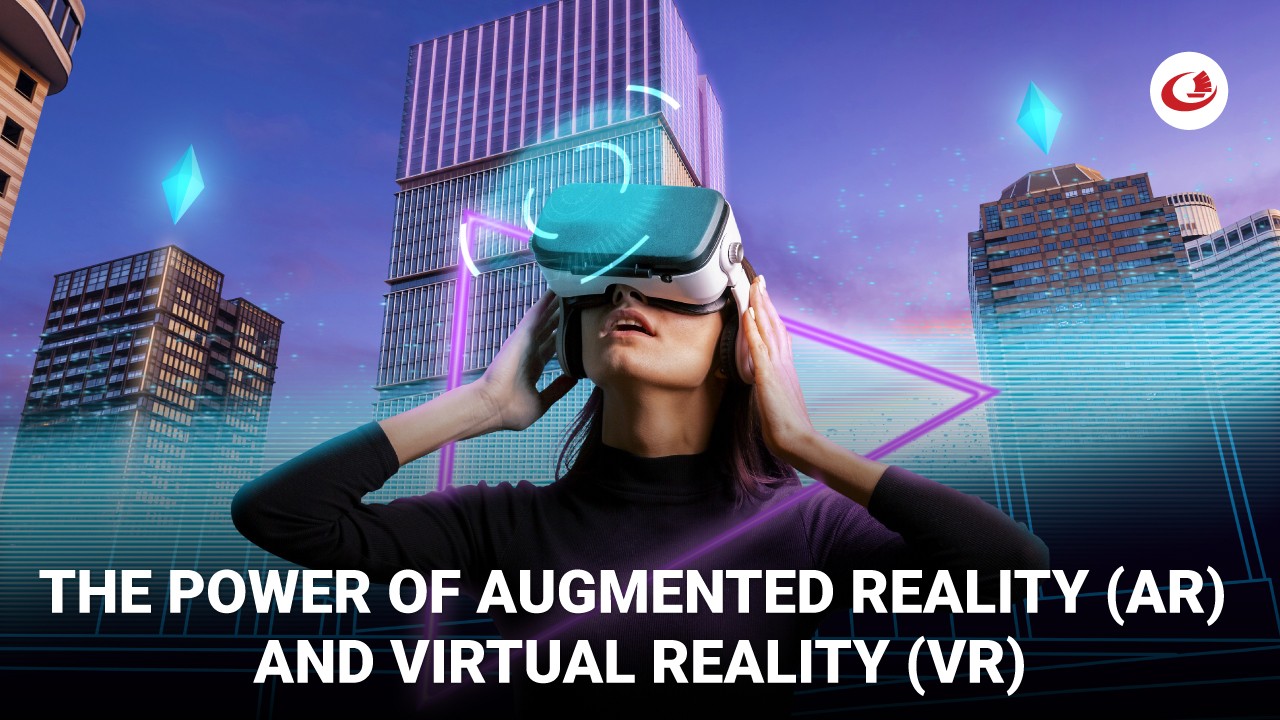
Revolutionizing Business: The Power of AR and VR in Marketing, Customer Engagement, and Product Design
One IBC Group
International Corporate Services Provider, Company Formation Provider, Business Servcies.
In today's fast-paced and ever-evolving business landscape, companies are constantly seeking innovative ways to engage customers, streamline operations, and stay ahead of the competition. Two technologies have emerged as game-changers in this regard: Augmented Reality (AR) and Virtual Reality (VR). These immersive technologies are not just confined to gaming or entertainment; they are increasingly becoming indispensable tools in marketing, customer engagement, and product design.
What is Augmented Reality (AR) and Virtual Reality (VR)?
Augmented Reality (AR) and Virtual Reality (VR) are immersive technologies that alter our perception of the real world in different ways:
1. Augmented Reality (AR):
2. Virtual Reality (VR):
Augmented Reality (AR) enhances the real world by adding digital elements to it, while Virtual Reality (VR) creates a completely virtual environment that users can immerse themselves in. Both technologies have applications across various industries, from entertainment and education to healthcare and business, and they are continually evolving to provide more immersive and realistic experiences.
AR and VR in Marketing:
Augmented Reality (AR) and Virtual Reality (VR) have breathed new life into marketing campaigns, offering unique and memorable experiences for consumers. One of the most compelling examples comes from IKEA. Their Augmented Reality (AR) app allows customers to place furniture in their homes before making a purchase. This not only enhances the shopping experience but also reduces the rate of product returns, a common issue in online furniture retail.
Another shining example is the beauty industry. Brands like L'Oréal and Sephora utilize Augmented Reality (AR) to enable customers to virtually try makeup products through their mobile apps. This interactive approach not only boosts engagement but also helps customers make more informed purchasing decisions.
Customer Engagement Reinvented:
In the realm of customer engagement, Augmented Reality (AR) and Virtual Reality (VR) offer unmatched opportunities. Take the tourism industry, for instance. Companies like Airbnb have incorporated Virtual Reality (VR) to provide virtual property tours, allowing potential renters to explore accommodations as if they were physically present. This approach not only improves the booking experience but also builds trust between hosts and guests.
领英推荐
Additionally, Augmented Reality (AR)-based customer service applications are gaining ground. Brands are using Augmented Reality (AR) to offer real-time, interactive assistance to customers. This not only enhances the customer experience but also reduces support costs and improves issue resolution.
Revolutionizing Product Design:
The product design process has been utterly transformed by Augmented Reality (AR) and Virtual Reality (VR). Companies like Ford and Boeing have integrated Virtual Reality (VR) simulations into their design processes, enabling engineers and designers to test prototypes in a virtual environment. This not only accelerates development but also saves on costly physical prototypes.
Moreover, companies like Adidas are using Augmented Reality (AR) to allow customers to design their own sneakers. Through an Augmented Reality (AR) app, customers can customize colors and materials, creating a personalized product. This not only drives customer engagement but also provides valuable insights into consumer preferences.
Emerging Trends:
As Augmented Reality (AR) and Virtual Reality (VR) continue to evolve, several trends are emerging. Mixed Reality (MR) is gaining traction, offering a blend of real and virtual worlds. Mixed Reality (MR) can be used in areas such as employee training, allowing workers to learn and practice tasks in a safe and controlled virtual environment.
Another exciting trend is the rise of immersive 3D advertising. Brands are creating interactive and memorable ad campaigns using Augmented Reality (AR) and Virtual Reality (VR), providing users with an experience they won't soon forget.
Augmented Reality (AR) and Virtual Reality (VR) are transforming the way businesses approach marketing, customer engagement, and product design. Successful case studies demonstrate their real-world impact while emerging trends promise even more innovation in the future. As technology continues to advance, companies that embrace Augmented Reality (AR) and Virtual Reality (VR) are positioning themselves to thrive in an increasingly immersive and customer-centric world.
#OneIBC #AugmentedReality #AR #VirtualReality #VR #ARtech #VRtech #MixedReality #MR #ARtrends #VRtrends
===================
?????? ?????? ??????????
Email: [email protected]
Website:www.oneibc.com